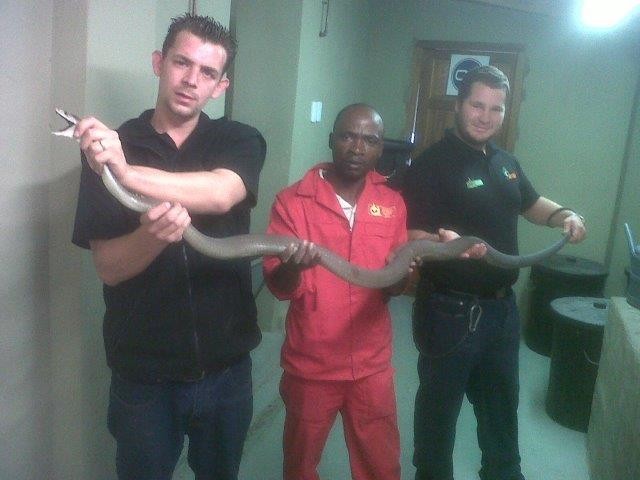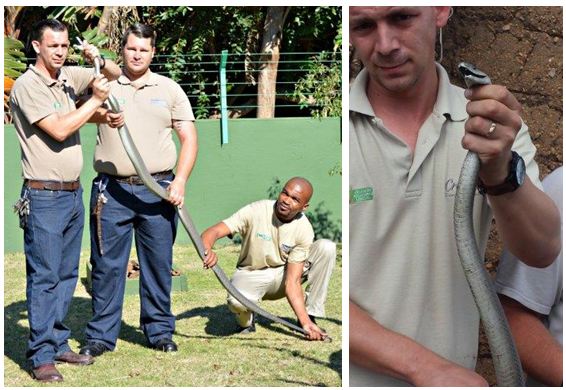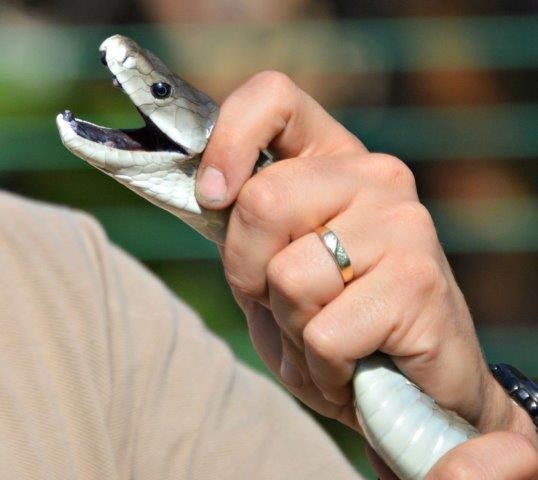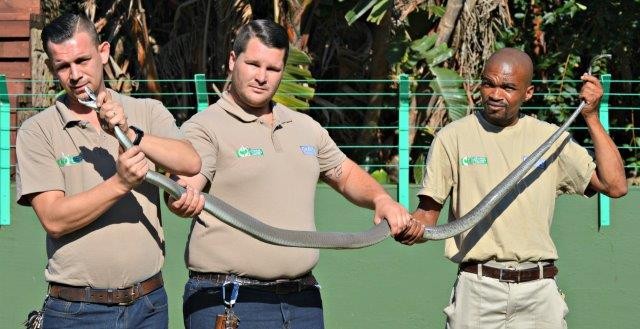South Coast herpetologist gives lifesaving insights into the Black Mamba
The onset of winter is typically the start of mating season for Africa’s most feared snake, the Black Mamba, and residents are warned to contact a snake removal expert if they have any encounters.
The species can lay anything from six to 17 eggs during summer and, upon hatching, the juveniles measure roughly 45cm in length and may grow incredibly fast, with some reaching 2m in length within their first year of life.
This highly venomous species is found throughout most of Kwa-Zulu Natal, Mpumalanga, Limpopo, Eastern Cape and the North West Province. This species’ famed aggressiveness, sheer size, vast area of distribution, speed and potent, fast-acting venom are contributing factors towards its consistent media representation.
The Black Mamba’s extremely fast acting neurotoxic venom affects the snake bite victims’ nervous and respiratory systems and severe bites inflicted may result in symptoms being noticeable within 10 to 20 minutes after the bite. Seeking medical attention is critical and must be obtained as soon as possible.

(Image: Supplied by Crocworld Conservation Centre)
Martin Rodrigues, centre manager for Crocworld Conservation Centre on the KwaZulu-Natal South Coast and renowned herpetologist, elaborated on this, stating that the venom of one Black Mamba is potent enough to kill up to 45 000 mice.
“It’s estimated that 10 to 15mg of venom can kill a human, and one bite is capable of delivering 100 to 120mg of venom, with mamba’s often biting more than once,” said Rodrigues. “This is why the mamba’s bite is often referred to as the ‘kiss of death’.”
However, he said it was important to remember that the Black Mamba is often misunderstood, as its instinct is not to attack or bite.
“The mamba will instinctively flee from danger, however, the problem is when the snake is cornered – as is often the case when bites occur – it will attack to defend itself. This is why it is so important to contact a snake removal expert as a first port of call and not to attempt to catch or kill it, remain at a safe distance 3m or more away from the snake, keep an eye on it and contact a professional to assist.”
He said that, despite the name, Black Mambas are actually a light grey to dark gun metal grey colour. The name derives from the inky black colour inside the mouth which is displayed when the snake is threatened in a behaviour known as gaping.

Rodrigues said that another surprising fact about the Black Mamba, which not many people know about, is its unique secretion odour.
“The Black Mamba gives off a secretion which smells a lot like curry,” he explained. “So if you arrive home and there is a strong smell of curry, which isn’t on the dinner menu, then there is a good chance that a Black Mamba has been, or could still be, in the area.”
Rodrigues recommended that residents should determine the closest medical facility equipped to handle snake bites.
“Ensure the facility has stock of the lifesaving anti-venom needed for various venomous snake bite cases,” said Rodrigues. “People who have been bitten by a Black Mamba that have prompt access to treatment will recover over a few days with no long-lasting effect.”
In the past five years, snake removal experts from Crocworld Conservation Centre have safely removed more than 20 Black Mambas in the mid-South Coast area, of all which were released into secure areas. For any snake removals in the greater Scottburgh region – or for reference to snake removal experts in other KwaZulu-Natal areas – contact Crocworld on 039 976 1103.
Also view:
Safety from Snakes and Snake Bites





